Abbreviation
[Editorial Note] F# indicates the number by which the person is identified in the Catalog of Baptized Indians (MAB Miss Ind 313.4) and also in the Fliegel Index of the Records of the Moravian Mission among the North American Indians.
A
Abraham (F# 1) husband of Sara (F #8) aka Schawasch. Mahican; bap. 02/23/1742 in Oley, PA (at the Synod) by Christian Rauch; d. 11/10/1762 in the Wyoming Valley.
Ahamawad, see Christian Post.
Allumapees, aka Sasoonan, (c. 1675 -1747), a Delaware Sachem who signed away the land between the Lehigh River and Duck Creek to the British.
Anousseráchori (al. Genousseracheri), see, David Zeisberger.
Annuntschi, see Nathanael Seidel.
B
Bachhof, Rudolf Gottlieb, (6.1.1717 – 21.9.1776) b. Lüneburg, Schleswig-Holstein; d. Friedberg, Salem, North Carolina.
Beata (F #83) baptized as a widow; wife of Zacheus (F #19) and sister of Maria (F #74), Delaware, bap. in Bethlehem in 1746 by Brother Pyrleus; d. 03/06/1762 Wechquetank.
Blackfish, Mohican, visitor to Gnadenhütten and Shamokin
Boehmer, Martin, married to Margaret, visitor at Shamokin,
Brainerd, Reverend David, (1718-1747), b. Haddam, Connecticut; an American missionary to the Native Americans who had a particularly fruitful ministry among the Delaware Indians of New Jersey.d. 1747.
Brocksch, Andreas (10.14.1703 – 7.5.1779, m. Ann Broksch, entrusted with the Oley Schoolhouse until 1748 when both were called back to Bethlehem. https://moravian.bucknell.edu/memoirs/andreas-brocksch/
Brocksch Ann (2.24.1700 – 9.20.1758)
Brodhead, Daniel, an Indian Trader from Mennissing was an Indian Trader who had lived in the Wyoming Valley. According to Spangenberg and Cammerhof he attended the Synod in Germantown on 10-14 May 1747, with Justice Smout from Lancaster. Brodhead apparently was very fond of the Moravians. See Cammerhof Letter #4 to Zinzendorf et al. May 22-24, 1747. MAB. Cammerhof describes him as “respected and intelligent and is fond of the Brethren. He has attended our Synods regularly” Cammerhof. letter 7. (find citation)
Bruce, David, (?-1749), itinerant Moravian preacher to New Jersey, Pennsylvania and Connecticut; d. Wechquetank, July 1749; a carpenter from Edinburgh. For biographical information concerning Bruce, see William N. Schwarze and S. H. Gapp, “A History of the Beginnings of Moravian Work in America.” Bethlehem: Moravian Archives, 1955, pp. 152-53; for his death entry, see ChReg 10, 4 Jul 1749, pp. 200-201. His work appears to have not been rated very highly by Cammerhof, who described him and his wife in the following passage from his letters to Zinzendorf. “[A] Presbyterian, whose principles continue to have a great influxum in his praxim, and therefore cannot be further utilized as a Land Prediger, has his heart nonetheless in recent times been affected powerfully and deeply by the grace of our Gemeine. We now have hope for him. He has been open to all of our inclinations for him, and accepting the Savior’s calling has gone to Gnadenhütten as a assistant in the outward work and for the preparation of the Heiden-Sache (native matters). His wife [Judith] is a plain, innocent, emotional heart, bound to the Lamb and the Gemeine, always willing despite having little natural talent of any kind.” Cammerhof, p.24.
C
Cammerhof, Johann Christoph Friedrich, (1721-1751), aka Gallichwio, “A Good Message.” B. Hillersleben, Saxony; studied theology at the University of Jena, Germany, ordained Bishop of the Moravian Church in 1746, from 1747 Spangenberg’s assistant in North America, prominent practitioner of the “Sifting Period” theology; author of detailed letters to the leadership of the Church in the 1740s about the mission in North America. “Friedrich Cammerhofs ausführliche Berichts aus Amerika an Zinzendorf, Anna Nitschmann u. Johannes von Wattewille. 1747-1749 “UA R.14.A.28
Cammerhof, Anna, aka “Janekeaguhontis”
Christian Renatus (F #117), Delaware, known as Tepackhoshi, or Jo Growdon, from Meninwolagomeka; bap. 11/26/1748 at Gnadenhütten II by Cammerhof; m. to Salome (F #142).
Cutfinger, Peter
D
Daniels, Samuel, a Delaware
Delaware, George, described as a rich Delaware from Ohio. Important in the final days of the Shamokin mission
E
Elisabeth (F #372), the Delaware wife of Paxinos, Chief of the Shawnee in Wyoming and also the sister of Justina (F #203); bap. 02.17.1755 in Bethlehem by Spangenberg.
F
Fabricius, Georg Friedrich (6.1.1716 – 24.11.1755), linguist and missionary at Gnadenhütten II; d. in the attack on mission in November 1755.
Freeman, Thomas, Indian at Quenischachque, 1753.
Frey, Heinrich (Henry), b. 12 May 1724 in Philadelphia County, Pennsylvania; d. 25 September 1784 at the age of 60 in Lititz, Lancaster County, Pennsylvania.
G
Gabriel, George, established in 1713 a settlement “at the mouth of Penn’s Creek” today, Selinsgrove, Pa. It became known as Gabriel’s Plantation, and is generally thought to be the first white settlement on the west bank of the Susquehanna River.
Ganachragejat, see Martin Mack
Ganniatarechoo, see Johann Christoph Pyrlaeus
Gallichwio, see Friedrich Cammerhof
Garrison, Lambert, arrived in America in 1754
Gattermeyer, Johann Leonhard, (19.7.1721 – 24.11.1755) b. Regensburg, Bavaria, d. in the attack on Gnadenhütten, PA 1755.
Gideon, aka Tadeusseont (Tadeuscont) and Honest John, (F #259), Delaware Indian, brother of Nicodemus (F #193) and Petrus (F #245), husband of Elisabeth (F #260).
Glück, Peter, shoemaker, lived 15 miles south of Shamokin on the Tulpehocken path.
Grube, Bernhard Adam (1715-1808, b. Walschleben, Thuringia; Lutheran pastor in Erfurt before he arrived in America on the Irene in 1746, and served in Moravian missions broadly. Between 1763-1765 accompanied and assisted the Christian Indians held in Philadelphia; m. Elisabeth Büsse, née Krüger (1715-1776). “Biographical Sketch of Rev. Bernhard Adam Grube.” The Pennsylvania Magazine of History and Biography, vol. 25, no. 1, 1901, pp. 14–19. JSTOR, www.jstor.org/stable/20085949. Accessed 6 Aug. 2020.
H
Hagen, Johannes, (?- 1747), b. Brandenburg; arrived in Georgia in 1740; worked as a missionary to the Cherokee; came to Bethlehem in 1742, m. Margaret Dissmann from Providence Township, near Philadelphia; d. July 1747 at Shamokin, PA.
Hahotschaunquas, a Cayuga, guide to Cammerhof and Zeisberger through Iroquoia
Harris, John, Jr. (1716 – July 29, 1791), b. Harrisburg, Pennsylvania), was a storekeeper and frontiersman who operated a ferry along the Susquehanna River at Harrisburg. Harris the son of John Harris Sr., who is considered the first settler to establish a trading post along the Susquehanna River at what would later become the state capital of Pennsylvania.
Henry, William (May 19, 1729 – December 15, 1786), merchant, gunsmith, and member of the Moravian Congregation at Lancaster, later member of congress, important link between Bethlehem and Fort Pitt.
Hoffmann, Christian Gottlob (21.12.1715 – 25.8.1771)
Hussey, Robert (1713-1775), b. Wiltshire, England; a teacher at the Moravian School in Oley, Pennsylvania; m. Martha Hussey (1719-1790). See her memoir in Faull, Moravian Women’s Memoirs and https://moravian.bucknell.edu/memoirs/martha-hussey/
I
Isaac (F #101), son of Abraham (F #1) and Sara (F #8); Mahican, bap. Gnadenhütten II by Martin Mack 05/08/1747; d. of smallpox in Philadelphia Barracks 07/24/1764.
J
Jeremias (F #164), a Delaware from Wamphallobank; bap. 3/15/1749 by Brother Johannes.
Jepse (maybe Jephtha), a Sopus Indian from Shekomeko who was baptized by the Moravians in 1743
Joachim (F #44), a Mahican, son of Abraham (F #1); bap. 03/27/1743 by Brother Büttner at Shekomeko (NY) when single, later m. Catharina (F #168).
Jonathan (F #13), a Mohican, bap. Shekomeko by Br Büttner, 1747.
K
Kiefer. Marcus (1719-1791), blacksmith at Shamokin, m. Magdalene Rubl. https://moravian.bucknell.edu/memoirs/marcus-kiefer/
Kliest, Daniel, (4.15.1716 – 5.1.1792), Blacksmith at Shamokin, Memoir is in Bethlehem Diary, Vol. XXXVII, p. 217
Krogstrup, Otto Christian (1714-1785), minister of congregations in Litiz, Graceham, York, and Lancaster; d. 1785 in Bethlehem.
Kuchern, Peter, Tulpehocken resident.
L
Lapachpeton, Delaware Chief, eldest son of Nutimes, resided at confluence of North Branch of the Susquehanna River and Catawissa Creek, PA
Leonhard (F #213) a Delaware, brother of Jonathan (F #173) from Meniowolagamekah, husband of Lucia (F #288)
Lessly, Johann Friedrich, (2.29.1732 – 11.24.1755), b. Conestoga, PA; one of the first members of the Single Brethren’s Choir in Bethlehem; d. at the attack on the Gnadenhütten, Pa. mission in 1755.
Loesch, Brother George and Sister Christina, Tulpehocken, PA.
Logan, John, (c. 1723–1780) also known as Tachnechdorus (also spelled “Tachnedorus” and “Taghneghdoarus”) was the eldest son of Chief Shikellamy.
M
Mack, Jeannette (Jennetje) (1722-1749), née Rau; b. Dutchess County, New York, learned fluent Mohican from the Native Americans who lived around her father’s farm. The farm was visited in 1742 by Count von Zinzendorf, Anna Nitschmann, Benigna von Zinzendorf and Martin Mack on their trip to nearby Shekomeko; m. Martin Mack and worked as missionary in Pennsylvania and New York.
Mack, Johann Martin (1715-1784), aka “Ganachragejat”, b. Laysingen, Württemberg, Germany, arrived in Georgia 1736, co-founder of Bethlehem, from 1742 assistant to missionary Christian Heinrich Rauch at Shekomeko; m. Jeannette Rau 9. 14. 1742; entrusted with overall direction of mission work in North America in 1745, served as missionary in the Caribbean in 1762-1784, d. St. Croix 1784.
Maria (F #362), Mahican, relative of Abraham (F #1) awakened in Wyoming Valley by Zinzendorf; bap. 07.28.1754 Brother Grube in Wyoming in the Shawnee town; d. fall 1755 above Wyoming.
Mariane (F #227) a Delaware, bap. by Cammerhof in Bethlehem in 1749.
McKee, Thomas (c. 1695-1772), b. Antrim, Ulster, Ireland, d. McKee’s Fort, Pa, m. (2) Tecumsapah “Mary McKee” McKee (Straight Tail), Susquehanna trader and Crown Indian Interpreter for the Delaware and Shawnee.
Merck, Jacobus van der, builder of the mill in Bethabara and gun stocker. Moved down to North Carolina and married Christina Loesch.
Meuer, Joseph, known as Meyer, silversmith in Lancaster
Meurer, Johann Philip (Maurer), b. Ingweiler, Alsace March 25 1708; February 1742 traveled with the first sea congregation to Pennsylvania and arrived in Bethlehem, June 1742; ordained in the church of Tulpehocken and served there until 1746; went to Donegal, Lebanon, Swatara and York and served the congregation until 1756; he and wife had five daughters, d. April 15, 1760 in Bethlehem Pa.
Montour, Andrew (c. 1720-1772) aka Anderius, Sattelihu, Eghnisara and Henry Lewis Montour-Tausseson; son of Madame Montour, Andrew was an important métis interpreter and negotiator in the Virginia and Pennsylvania backcountry in the latter half of the 18th century; of Oneida and Algonquin ancestry, with a French grandfather; b. in his mother’s village of Ostonwakin (near current Montoursville, Pennsylvania), he later led the village in the 18th century before settling further west.
Montour, Madame Isabelle/Elisabeth (1667 or c. 1685 – c. 1753) influential interpreter, diplomat, and local leader of Algonquin and French Canadian ancestry; usually referred to as “Madame” or “Mrs.” Montour; may have been Isabelle (or Elizabeth) Couc, a Métis born in 1667, or perhaps Isabelle Couc’s niece, who was born around 1685 and whose given name is uncertain. See, Simone Vincens, Madame Montour and the Fur Trade (1667-1752) (trans. and edited by Ruth Bernstein) (xlibris, 2011). Alison Duncan Hirsch, “‘The Celebrated Madame Montour’: ‘Interpretess’ Across Early American Frontiers” Explorations in Early American Culture, 4 (2000): 81-112.
Margaret, French, sister/niece of Madame Montour; Margaret Montour, (1690–) also known as French Margaret. She was married to an Iroquois named Katarioniecha (Peter Quebeck), a Mohawk. They resided at a village called “French Margaret’s Town” (Wenschpochkechung, also known as Quenisheshaque ), on the west branch of the Susquehanna at the mouth of Lycoming Creek (now Williamsport, Pennsylvania). The couple had at least five children: Catherine (French Catherine), Esther (Queen Esther), Nicholas, a son who was killed about 1753 fighting the Creeks, and Mary, or Molly. Like her mother Margaret attended treaty conferences and often interpreted.
Müller, John Jakob, came over to America with Zinzendorf in 1741.
N
Nathanael, (F #14) husband to Zippora (F #5) and then to Rebecca (F #9), Mahican, bap. at Shekomeko by Christian Rauch 10/10/1742; d. 1756 “on the Susquehanna”.
Neisser, Georg (1715-1784), b. Sehlen, Moravia, joined Spangenberg, Wesley and Ingham on trip to Georgia 1735; Moravian minister in New York, Philadelphia; d. Philadelphia 1784. https://moravian.bucknell.edu/memoirs/george-neisser/
Neshanockeow, spreads rumors about the Moravians
Neubert, Daniel (1704-1788) b. Königswalde bei Annaberg, Sachsen,
Neubert, Rosina (1705-1785), b. Kunewald, Moravia, m.n. Hauer, m. Daniel Neubert https://moravian.bucknell.edu/memoirs/rosina-neubert/
Neuser, Joseph (2.28.1722 – 6.25.1793)
Nutimes, aka Nootimes, “King” of the Delaware, Delaware signatory to a deed in 1749; enclosed in the proceedings of councils at Easton. July 21-Aug. 7, 1757.
Nutimes, Isaac, son of King Nutimes of the Delaware, who is reported to have had three Africans living with him, one of whom was his wife. See Transactions of the Moravian Historical Society, vol. 1, p. 266.
O
Otto, John Matthew. (1714-1786), b. Meiningen, Germany. Trained to be a surgeon. Travelled to Bethlehem 1750. https://moravian.bucknell.edu/memoirs/johann-matthaeus-otto/.
Orth, Balthasar (1736-1794), b. Lebanon Township, Lancaster County, m. Anna Catharina Roehmer, d. Lancaster, PA. Cammerhof notes that he “and his wife Catharina are a loving couple. The Lamb and the Brethren love them in their simplicity. They are loyal Diener in the Savior’s matters. They live about 20 miles from the Susquehanna and the Ferry crossing. From this spot we deliver our provisions up the water to Shamokin. They serve us faithfully from there, and we praise the lamb and bless them for this work.” (Cammerhof Letter #? P. 103)
P
Paxinos, (?-1761), a Minisink, b. in Ohio country, after 1744, a Shawnee leader; wife, Elizabeth, a Delaware Moravian convert. After the outbreak of the French and Indian War he and his people moved north to Tioga (Athens, Pa). Attended the Easton Treaty in 1757, where he brought 57 Indians. In 1760, he went with his family to Ohio where he died in 1761. Cornstalk was his grandson.
Pfeiffer, Peter (2.22.1710 – 11.7.1797), b. Niedermader/Elsass, Germany; d. Schöneck, Pennsylvania.
Post, Christian Frederick, aka Ahamawad (1710 – 1785), b. Conitz, Polish Prussia, arrived in Bethlehem, 1742. Served as missionary to Shekomeko in 1743 and then Pachgatgoch. During Seven Years War served as messenger between the Colonial government and Delaware and Shawnee. 1761-62 worked as an independent missionary to the Delaware in Ohio, and finally as a missionary on the Mosquito Coast, Nicaragua. Died. Germantown, Pennsylvania.
Powell, Joseph (1711 – 1774), b. Whitchurch England, originally a follower of George Whitefield, joined Moravians in Bethlehem in 1742; missionary in Shamokin 1747-8; later missionary in Wechquanach, Connecticut, d. 1774. Cammerhof comments “Joseph Powel[l] is one of our blessed English members dedicated to the Lamb and His people. He is a soft heart and is very blessed in his marriage now. He is currently our Vice-Vorsteher in external matters and is well-suited, loyal in this role. We keep our eye on his Heiden-Plan, in which he has made a start. Beginning of June of this year he went to Shamokin with our dear Br. Hagen. He went to help with the construction of the house for the blacksmith. When the blacksmith arrived up there, he returned. His wife (Martha) also enjoys the blessings of the Gemeine in her marriage. She is very useful in the outward work of the Gemeine.” (p. 17)
Powell, Martha, (1704-1774), b. near Oxford, England, member of Fetter Lane Congregation, London, m. Joseph Powell 1742 and became member of the First Sea Congregation. Served in various country congregations in Mid-Atlantic and in 1759 went as missionary with husband to Jamaica for six years. In 1765 returned to Bethlehem and finally worked in Maryland, at Carrols’ Manor. https://moravian.bucknell.edu/memoirs/martha-powell/
Pyrlaeus, Johann Christoph (1713-1785) aka, Ganniatarechoo, b. Saxony, Germany, studied at University of Leipzig, came to Bethlehem in 1741 with Zinzendorf, accomplished linguist, travelled widely in Mohawk country; m. Susanna Benezet, b. Wandsworth, London. https://moravian.bucknell.edu/memoirs/johann-christopher-pyrlaeus/
R
Rachwistonis, see Anton Schmidt.
Ragatachke, aka Thomas Dunn (al. “Donn, Ton”), Iroquois, member of Shikellamy’s extended family
Rahel (F #244), Delaware, sister of Nutimes, bapt. on the Monocasy Creek, near Bethlehem January 1750 by Cammerhof.
Rauch, Christian, (1718-1763), aka Tschigochgoharong, name given him in Shamokin; b. Bernburg, Anhalt-Bernburg, first Moravian missionary to Shekomeko, arrived there 1740,; m. 1742 Anna Elizabeth Robbins, Philadelphia, d. Jamaica, West Indies, 1763.
Rieth, Caspar, https://www.wikitree.com/wiki/Rieth-40, uncle of Anna Catharina Schmidt, née Rieth, wife of Anton Schmidt.
Roesch, Gottfried
Roesler, Gottfried
S
Sawonagarat, Shawonogarati, neighbor to the Shamokin mission
Salomon (F #133) alias Tamekappi and Keposch, King of the Delawares at the Forks (Bethlehem), a Delaware; bap. 01/24/1749 in Bethlehem, by Brother Johannes; d. spring 1756 in Tioga (Athens, Pa).
Schaafmann, Conoy, friend of the Moravians
Schmidt, Anton, (1725-1793), aka “Rachwistonis” in Mohawk, name given him by Shikellamy in Shamokin; blacksmith at Shamokin 1747-1754. B. Presburg, Hungary, emigrated with family to America, lived in Oley, joined Moravians in 1746 and moved to Bethlehem in 1747; m. Anna Catharina Rieth with whom he had three sons and one daughter. January 1755 moved back to Bethlehem and worked in Christiansbrunn on the farm. Married a second time to Beata Yselstein with whom he had another 6 children. https://moravian.bucknell.edu/memoirs/anton-schmidt-sen/
Schmidt, Anna Catharina, m.n. Rieth; b. 1727 in Heidelberg, PA, lived with Conrad Weiser where s met Anna Nitschmann 1741; introduced to Zinzendorf and joined Moravians. Married Anton Schmidt in 1747, lived in Shamokin until January 1755, died 1762.
Smith, Andrew, a trader
Schäffer, Michael (1696 – 1760) in whose house several conferences were held during the early period of Moravian activity in the Commonwealth. See, J. Taylor Hamilton, “The Confusion at Tulpehocken,” Transactions of the Moravian Historical Society, Vol. 4, No. 5 (1895), pp. 237-273.
Seidel, Christian Gottfried, (1718-1759)
Shikellamy (also, Swatane, Onkiswathetmi) (?-1748) Thought to be originally French, taken prisoner and adopted by the Oneida, later Oneida chief with oversight over the Six Nations in Pennsylvania and Ohio regions and who oversaw the area around the Confluence of the North and West Branches of the Susquehanna River at Shamokin (present-day Sunbury), d. Shamokin 1748.
Shikellamy, Neanoma (1695-1747). Cayuga nation; wife of Shikellamy, mother of James Logan, John Logan etc.
Sociziówonhe, Indian from the Long Island on the West Branch.
Spangenberg, August Gottlieb (1704-1792) aka “Brother Joseph” and received name “T’girhitonti” on his trip to Onondago; b. Klettenberg, Saxony, studied theology at Jena, served as a teacher at the Halle orphanage of August Hermann Francke; joined Moravians and from 1733 closely associated with Zinzendorf; served as head of American branch of the Moravian Church; d. Berthelsdorf, Saxony.
T
Tachnechdorus, (1718- ) aka John, Shikellamy’s eldest son; b. Butternut Creek, New York, m. Vastina (Shawnee/Quaker) from mouth of Pequea Creek;
Tshgahjute/Tajajute, (c. 1725- 1780); Shikellamy’s second son, aka James Logan. First wife is a Cayuga or a Mohican (acc. To Harry Swanger, 1949) who dies in Shamokin in 1747.
Tecarihonti, see Johannes de Watteville.
T’girhitonti, see August Spangenberg
Tianoge, a Cayuga. Friend to Spangenberg and Zeisberger
Y
U
V
Van der Merck, Jacobus. 12.18.1728 – 1.24.1773 Born in Esopus, New York and died in Bathabara, North Carolina. Active briefly in Pennsylvania and then moved down to North Carolina where he was the builder of the mill in Bethabara, NC and worked as a gun stocker. Before he moved down to North Carolina, he married Christina Loesch, daughter of the Loesches’ in Tulpehocken.
Vorsinger, Jacob (a Delaware).
W
Wagner, Anton (1709-1786) and Elisabeth Wagner (1710-1779). Elizabeth Wagner, née Fliery (or Thiery), was born in Muhlhausen, Switzerland, Oct. 4, 1710. While still in Europe she was married to Anton Wagner, who later became one of the clergymen serving the Heidelberg Congregation. The Moravian Register contains an extended biography of Elizabeth Wagner. It dwells on the religious difficulties she and her husband encountered in the Old World and the circumstances which led to their emigration to America in 1743. She died May 8, 1770.
Watteville, Johannes von (1718-1788), aka “Brother Johannes,” b. Johann Michael Langguth to Johann Michael Langguth and Anna Elizabeth Farbarius Langguth in Walschleben, Thüringen, Germany on October 18, 1718. Educated at both the University of Erfurt and the University of Jena between 1734 and 1737. During this period, Christian Renatus von Zinzendorf (1727-1752), the son of Nikolus von Zinzendorf, introduced von Watteville to the Moravian Brotherhood. Upon leaving school, he joined the Brüdergemeine in Hernnhut sometime between 1737 and 1738 and settled into the Moravian community at Hernnhaag and Marienborn. He later travelled to Hernnhut to meet with Nikolus von Zinzendorf and developed a close relationship to the leader of the Unitas Fratrum. He was adopted by Friedrick von Watteville in 1744 and married Benigna von Zinzendorf in Ziest, Holland on May 20, 1746. Upon his ordination as a bishop on June 4, 1747 in Herrnhaag, von Watteville began to travel extensively to visit Moravian communities in Pennsylvania, North Carolina, France, Switzerland, St. Thomas, St. Croix, St. John, England, Holland, and Germany, among others. In 1749, he was given the name “Tecaritonti” by the Seneca in absentia, which means the bringer of good news, and had been the name of one of the Seneca chiefs who had died. When Nikolaus von Zinzendorf died in 1760, von Watteville succeeded him as the leader of the Moravian Church. He not only continued to travel throughout his life, but he also sat at many Synods and was a member of the United Elders’ Conference. He died on October 7, 1788 in Gnadenfrei, Germany, present day Pilawa Górna, Poland.
Weiser, Conrad (1696 – 1760) Palatinate immigrant to Pennsylvania; learned Mohawk as a youth, from early 1740s was Indian agent for Pennsylvania and interpreter and diplomat between the Pennsylvania Colony and Native Americans. See, Paul A. W. Wallace, Conrad Weiser, 1696-1760, Friend of Colonist and Mohawk. Philadelphia: University of Pennsylvania Press, 1945. Reprinted Wennawoods, 2001.
Weiser, Christoph, brother of Conrad Weiser, born 1699 in Aspach, Stuttgart, Germany. Died June 16, 1768 (aged 69) at Emmaus, Lehigh County, Pennsylvania, United States(son of Conrad)
Wesa, Phillip (11.11.1723 – 3.18.1758), blacksmith, died in an accidental fall from a carriage.
X
Y
Z
Zeisberger, David, (1721-1808) aka Ganousseracheri, b. Zauchtenthal, Moravia; learned trade of shoemaking, ordained deacon of Moravian Church in 1749; m. Susan Lecron in 1781; studied Mohawk and Onondago and Algonquin languages; died Goshen, OH 1808.
Zinzendorf, Nicholas Ludwig von (1700-1760) aka “Brother Ludwig” and “Disciple”; b. Dresden; educated at the Francke Orphange in HAlle, studied law at University of Wittenberg, travelled to North America in 1741-1743; founded the Herrnhuter Brüdergemeine and Moravian Church in America, m. Erdmuth Dorothea Reuss (1700-1750) and Anna Caritas Nitschmann (1715-1760).
Missionaries at Shamokin
- Sept-Nov. 1745, Martin and Anna Mack
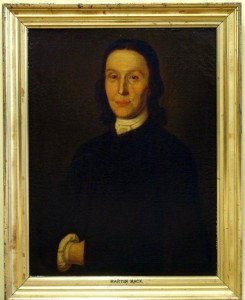
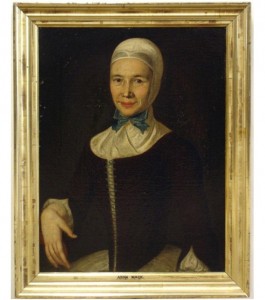
- May 26-Aug, 2, 1747, Johannes Hagen and wife
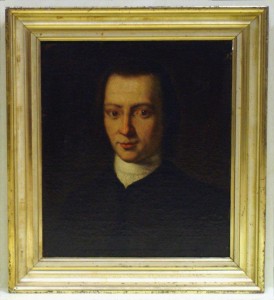
- Sept, 29-Dec. 31 1747, Friedrich C. Cammerhof
- Jan 4.-April 18 1748, Joseph and Martha Powell
- April 18-Jun 9 1748, Martin and Anna Mack
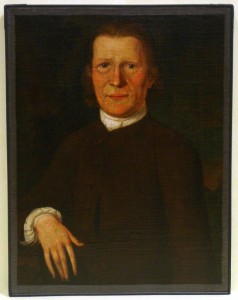
- Nov. 30 1748-Jan. 31 1749, David Zeisberger and Christian Rauch
- Feb 1-April 1, 1749, Christian Rauch
- April 3 1749-March 5 1750, David Zeisberger
- April 14-Jul. 31 1753, Bernhard Grube
- December 19-25 1754, Heinrich Frey and Gottfried Rösler
- April 1-October 30 1755, Gottfried Rösler
Blacksmiths at Shamokin
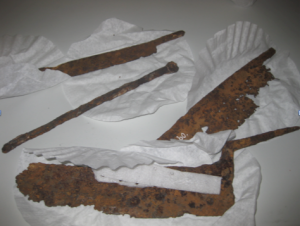
- 1747 Anton Schmidt. Named Rachwistonis by Shikellamy when appointed blacksmith for the Shamokin mission
- 1753-4 Daniel Kliest
- 1755 Marcus Kieffer
- 1755 Peter Wesa
